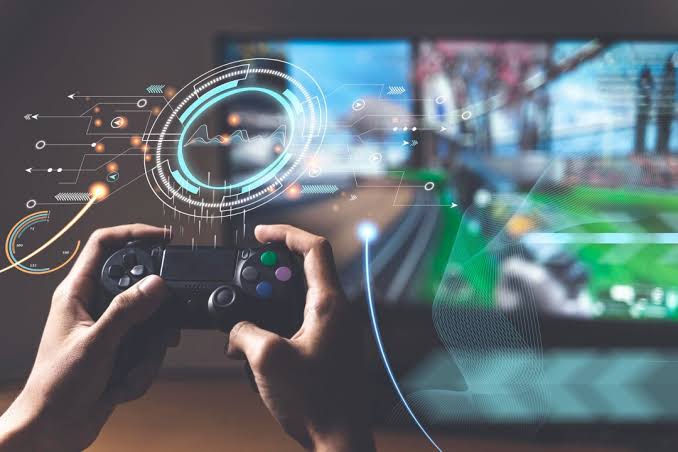The gaming world has changed a lot in the last ten years, and by July 2025, this change is still going strong. One big change is the rise of cloud gaming and game streaming. These new ways are changing how games are made, shared, and played. Players no longer need expensive consoles or big gaming computers. They can enjoy high-quality games on phones, tablets, and smart TVs. Gaming is now easier to access, smoother to play, and fits better into daily life. This article looks at how cloud gaming and streaming are changing gaming devices and what players can expect from future gadgets.
The Shift from Hardware-Heavy to Hardware-Light Experiences
Traditionally, gaming relied heavily on powerful local hardware—whether in the form of gaming PCs, consoles, or handheld devices. High-quality gameplay demanded significant investment in GPUs, CPUs, storage, and RAM. However, the emergence of cloud gaming platforms such as Xbox Cloud Gaming (xCloud), NVIDIA GeForce NOW, and Amazon Luna has begun to disrupt that model.
With cloud gaming, the computational heavy lifting is performed on remote servers hosted in massive data centers. The gamer simply needs a device capable of displaying a video stream and receiving input commands. This has led to a drastic reduction in the hardware requirements for playing modern AAA games.
By July 2025, major tech companies are refining their game streaming services to deliver 4K resolution with ultra-low latency. This technological advancement means even a budget smartphone or a mid-range smart TV can provide a near-console experience, making traditional gaming consoles less of a necessity for many users.
The Rise of Dedicated Streaming Devices
As game streaming becomes more prevalent, companies are releasing dedicated gadgets optimized for streaming performance. In 2025, brands like Logitech, ASUS, and even Netflix (through its newly launched gaming division) have introduced handheld devices built solely for accessing game streaming services.
These devices are typically lightweight, affordable, and designed with long battery life and high refresh rate displays. The Logitech G Cloud 2, for instance, boasts a 7-inch OLED display, haptic feedback, and native support for Xbox Cloud Gaming, Steam Link, and GeForce NOW. Rather than housing powerful internal components, the device focuses on seamless connectivity and ergonomic design.
Smart TVs are also playing a critical role in the transition. LG, Samsung, and Sony now include built-in game streaming apps in their 2025 smart TV models. Pairing a Bluetooth controller is often all it takes to start playing without the need for a console, opening the door for casual gamers and families to experience premium titles directly from their television sets.
Seamless Cross-Platform Integration
Another major trend in 2025 is the increasing cross-platform integration made possible through cloud gaming. Players can now begin a game session on their smartphone during a commute, continue on a laptop during lunch, and finish on a living room TV in the evening—all with their progress saved in real time on cloud servers.
This kind of flexibility has been made possible by advanced backend infrastructures supported by 5G networks and Wi-Fi 7 technology. The newest generation of routers and mobile data connections are significantly more stable, reducing the risk of input lag and dropped sessions.
Gaming companies are also responding by designing titles with cross-platform gameplay in mind. Services like Xbox Game Pass Ultimate and Ubisoft+ Premium allow users to jump from one device to another effortlessly, often with shared achievements and unlocked content. This approach not only improves convenience but also expands the reach of each game, enabling developers to cater to broader demographics.
Subscription Models and Content Libraries
In 2025, the business model behind gaming is increasingly mirroring that of streaming video platforms. Subscription-based access has become the norm, with players subscribing to services such as Xbox Game Pass, PlayStation Plus Premium, or GeForce NOW Ultimate to gain access to a wide library of titles.
This model reduces the financial barrier for many gamers who might not be able to afford individual game purchases or expensive hardware. For a monthly fee, users get access to hundreds of games, including day-one releases, indie gems, and even retro classics. Some services now offer rotating libraries and exclusive streaming-only titles, creating a Netflix-like dynamic in gaming.
Streaming services are also investing heavily in original content, with games being developed exclusively for the cloud. These titles take advantage of server-side power, allowing for gameplay mechanics that wouldn’t be possible on traditional consoles. This means users with even entry-level hardware can experience graphically intense, expansive worlds.
Challenges: Latency, Ownership, and Internet Dependency
Despite its promise, cloud gaming and streaming still face several limitations in 2025. Chief among them is latency. While improvements in network infrastructure have minimized lag for many users, those in rural or underserved areas may still experience delays that can disrupt fast-paced gameplay.
Another concern is the lack of ownership. In the streaming model, players often don’t own the games they play. If a title is removed from the library or if a subscription ends, access to that game is lost. This model shifts the gaming experience from ownership to access, which may not appeal to traditional gamers who value collecting and preserving their games.
Internet dependency is also a major consideration. Without a stable connection, streaming becomes impossible. This makes offline gaming less viable and could limit accessibility in regions with spotty service. Additionally, cloud gaming consumes large amounts of data, which could be problematic for users with limited internet plans.
The Future of Gaming Gadgets
Looking ahead, the future of gaming gadgets lies in convergence. Instead of needing separate devices for mobile gaming, console gaming, and PC gaming, we are moving toward all-in-one solutions optimized for streaming. Cloud-native handhelds, modular smart TVs, and even VR headsets are being developed to support game streaming as their core functionality.
AI-enhanced features are also expected to play a bigger role. In 2025, several cloud platforms already use AI to predict player behavior, optimize streaming performance, and even assist in real-time gameplay through features like dynamic difficulty scaling and adaptive UI design.
The boundary between game consoles and streaming boxes is blurring rapidly. Devices like the Xbox Keystone and PlayStation StreamPad are rumored to arrive in late 2025, offering affordable, plug-and-play streaming boxes with high-end gaming capabilities. These gadgets aim to make high-quality gaming experiences available to anyone with a screen and a controller.
Conclusion: A More Accessible and Immersive Era
Cloud gaming and game streaming represent a transformative shift in the gaming world. By minimizing hardware requirements, enabling on-the-go access, and offering expansive game libraries for a monthly fee, these technologies are making gaming more accessible and flexible than ever before.
While challenges remain—such as latency, digital rights concerns, and internet dependency—the progress made as of July 2025 is undeniably impressive. Gaming gadgets of the future will be less about brute hardware power and more about smart design, integration, and seamless connectivity.
For players, developers, and hardware manufacturers alike, this evolution signals a bold new era—one where the power of gaming no longer resides in the box beneath the TV, but in the cloud above us.



